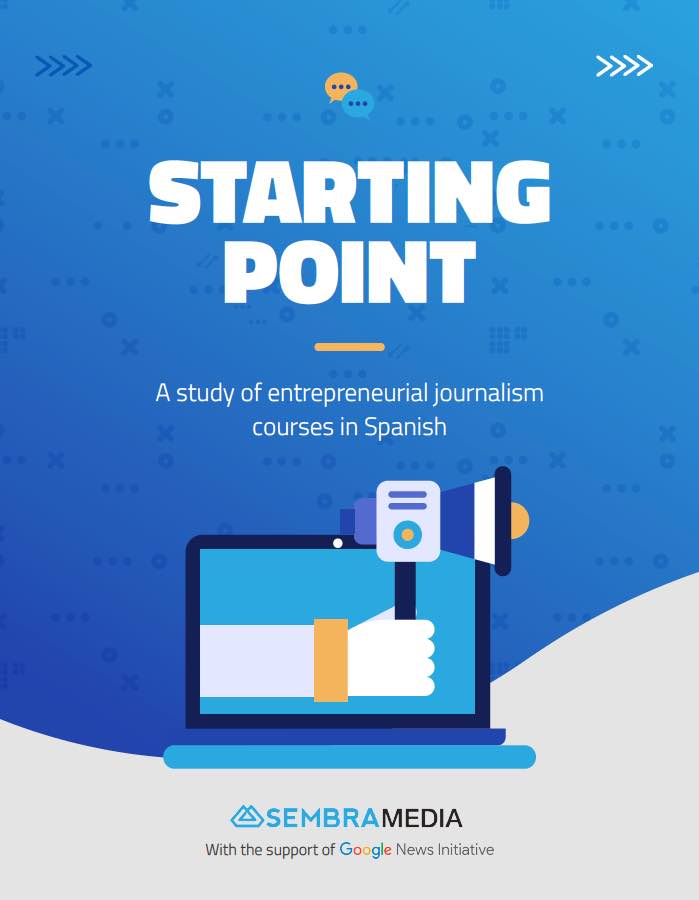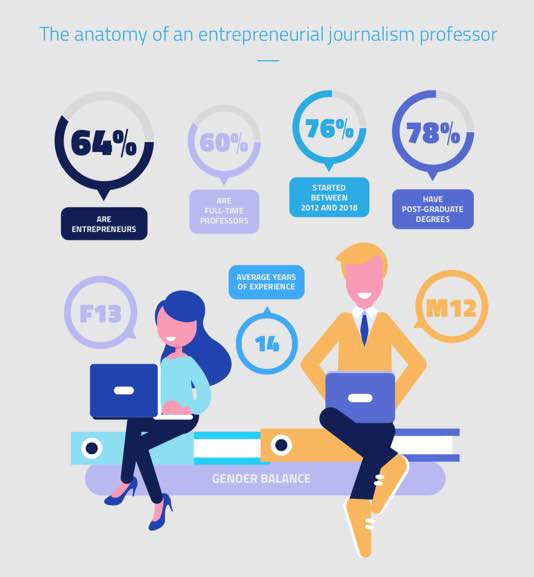I edited the Starting Point report; we studied 60 professors in 14 countries to learn how students were being taught digital business skills

In 2019, it is more evident than ever that traditional media is still locked in a death spiral. The Cleveland Plain Dealer used to have 350 reporters & editors. Now it has 33.
“…overall newsroom employment dropped nationally by 23 percent and in newspaper newsrooms employment dropped by 45 percent. More than 2,400 media jobs have been eliminated so far this year…”
Pew Research Center analysis of Bureau of Labor statistics
We’re seeing the effects of this cycle of destruction everywhere; the entire concept of truth itself is under assault. The digital platforms that were supposed to step to the fore and provide this wonderful place where news & information would flow freely, have instead become the darkest and most malignant part of the problem.
“Not our problem,” they say, as they instead concentrate on maximizing profit. Meanwhile, democratic societies are waking up to realize that when tragedies and violent attacks happen, the first thing that needs to be done is not to rely on social media to pick up and report the truth … no, those heady days that I chronicled here in this space of “citizen journalists” getting the truth out about the Fukushima reactor meltdown …
… those days have been replaced by performative social media-fueled massacres. To defang these terrorists, Sri Lanka shut down Facebook and YouTube.
In this environment, we need actual journalists and news reporters more than ever. But how do we teach them to survive in such a chaotic digital environment?
I’ve written extensively here & elsewhere over the years about what I call the “Great Digital Migration.” To extend this metaphor, if we’re going to be going from the place where we’ve been – traditional media – to an ultimate destination that is still somewhat uncertain, we are going to need some kind of direction.
Or we’re just going to wander around aimlessly until we run out of resources. Which is a pretty fair description of what the last 15 years have been like for the “mainstream media.”
The biggest takeaway from the research is that we are still in dire need of professors who have the skills & experience as digital entrepreneurs, so they can teach students a realistic view of the media ecosystem they’re about to find themselves scratching out a living in.

I’ve had to deliver a reality check to my own students; it’s why I worked so hard to try to give them skills that were applicable to other careers.
Many of the professors interviewed said that
understanding this tectonic shift is crucial to
comprehending what it really means when we talk
about entrepreneurial journalism.
“One of the most complex issues for me is having my
students understand the importance of entrepreneurial
journalism in the context of our country,†says Abraham
Torres from Mexico.
Elizabeth Saad from Brazil says that her students
come to the course with a “distorted” idea of what
journalism is actually like these days: “They think
they’re going to work in the newsroom and go out onto
the street to report. Things have changed a lot.”
Juan Luis Manfredi is convinced that entrepreneurial
journalism is real, not a fad, adding: “The reality is that
launching your own entrepreneurial journalism project
is going to be the most likely way to find a job.”
The sad fact is that in the near-to-mid term, most young journalists are going to have to either accept “hamster wheel journalism” at digital outfits that are desperately chasing clicks … or just quit the profession in favor of PR or consulting (as so many of my former students have done).
Those who want to stick with journalism as a career are going to have to DIY things. The bad news is that there are still significant barriers to building an audience while simultaneously building solid revenue streams.
The good news is that it can be done.
We just need to teach young journalists what that looks like.
